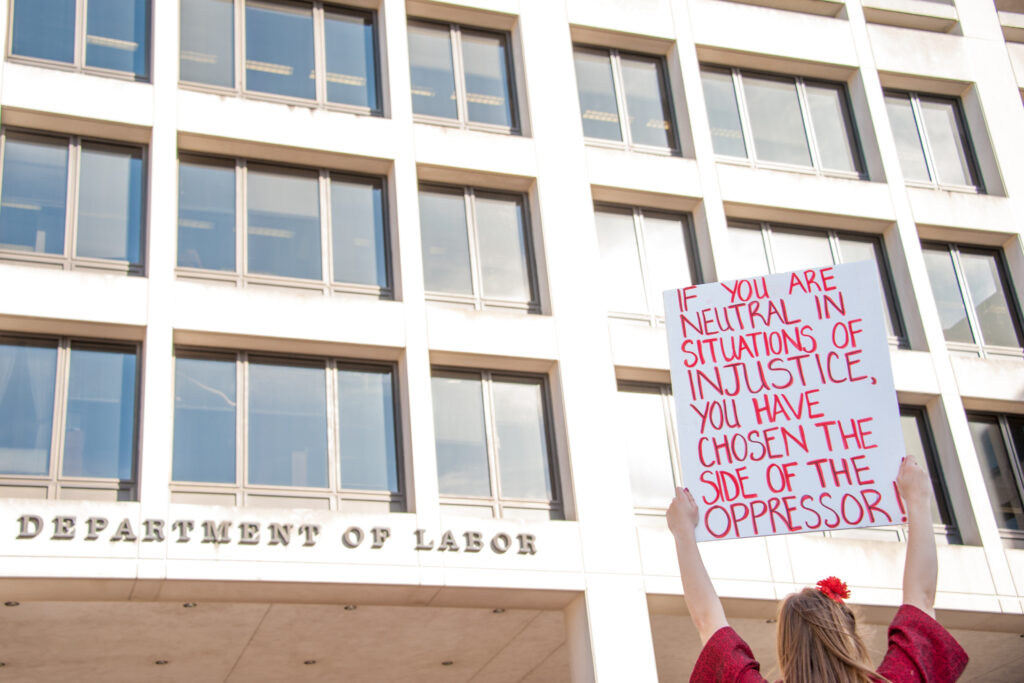In 2021, Equal Pay Day falls today (on August 31), 61 days past the end of the financial year. I can’t help but imagine the men of Australia sitting on a beach somewhere, sunglasses on faces and cocktails in hand, waiting out the extra two months of work that women have to do to make up the gender pay gap.
The cold hard fact is that this year, women have had to work 61 extra days to earn the same annual pay as men. Last year, it was only 59 days.
The gap between earnings for full-time employees now sits at 14.2%, according to recent figures released by the Workplace Gender Equality Agency, an increase of 0.8 percentage points over the last six months. COVID-19 has a lot to answer for.
We are, of course, dealing in averages here, and it is important to note the pay gap plays out differently for people of migrant or refugee background and for Aboriginal and Torres Strait Islander people.
Australian women were legally granted equal pay for equal work in 1969, and yet the gap between full-time earnings stubbornly remains, or, in the case of this year, increases. There are the more obvious causes, such as gender discrimination, and then there are more subtle causes, many of which were heightened and exasperated by the pandemic. Women have always been more likely to experience work interruptions, to work part-time and to respond to the demands of unpaid and caring work in the home and community.
A significant chunk of the pay gap between average full-time earnings can be attributed to the gender segregation of the Australian workforce. The She’s Price(d)less report estimates occupational and industrial segregation contribute to at least 17% of the gender pay gap. The Australian workforce remains stubbornly gendered, with women concentrated in lower paying jobs in service industries and the community sector.
Nationally, more than 70% of Community and Personal Service workers are women, and almost 78% of Health Care and Social Assistance workers are women. With so many women in the sector, is it any wonder that the Health Care and Social Service Industry has the highest gender pay gap at almost 25%?
Underfunding the community sector means less pay for a lot of women, both in the sector and across the labour force. For every care and social assistance job that isn’t adequately funded, women are picking up the slack, for free, at home and in the community.
Jane*, a former crisis response worker in Canberra, went to work in the community sector because it aligned with her feminist, anti-racist and anti-capitalist values and because she wanted to work alongside clients as partners rather than as a bureaucrat, and she wanted to centre the importance of relationships, care, empathy and defiance.
Her ability to care for women and to help them navigate the aftermaths of trauma and violence was seriously hindered by the lack of funding and resources in the organisations she worked for. “The whole under-funding of the sector creates this inflamed feeling, like everything’s squeezed and on fire and the scarcity mindset from widespread competitive tendering means there isn’t much room for empathy in the workplace.
“Under-resourcing took so many forms, not enough workers, not enough pay, lack of robust conditions to keep you safe and well and competent. It’s not just money, it’s architecture, a lack of robust HR systems or ergonomic set-ups, not enough space or natural light.
“For example, we didn’t even have a dedicated safe room at the local court in Sydney, so we had to build one out of screens and I had to patrol the edges and shoo away perpetrators looking to harass the women we were trying to protect and care for.
“There was quite literally no part of the work for which we were adequately resourced,” Jane says.

Australian women were legally granted equal pay for equal work in 1969, and yet the gap between full-time earnings stubbornly remains, or, in the case of this year, increases, writes Gemma Killen.
Even though Jane works in the ACT, which has the second-lowest pay gap in the country at 7%, she found that moving out of the women-dominated community sector and into a male-dominated workplace increased her annual salary by $15,000, doubled her super contributions and landed her an ergonomic desk, paid study leave and reasonable working hours.
In the ACT, costs of living are increasing such that women’s financial access to housing and health services are reduced. We are unable to attract and sustain a good quality labour force in the community sector because we can barely offer workers affordable places to live, let alone promise that their work will be sufficiently funded.
At the onset of the pandemic, women’s total hours worked reduced by 12%, and the gender gap in unpaid work increased by an extra hour every day. According to the Grattan Report on the impact of the COVID crisis on Australian women, released in March of this year, every 1% of GDP invested in the community sector and care work is predicted to increase employment by 1.7%, as women are freed up for work across the entire labour force.
This year, Australia slipped 26 places in the World Economic Forum’s Gender Gap Report to sit in 50th place. If we don’t commit to bolstering and supporting the community sector and the women who work in it, we will never close the gender pay gap.
*Jane is a pseudonym
Gemma Killen is a Senior Policy Officer at the ACT Council of Social Service and has a PhD in Sociology with a focus in Gender Studies. She enjoys cats, crafts, queer theory and robst feminist discussions.





